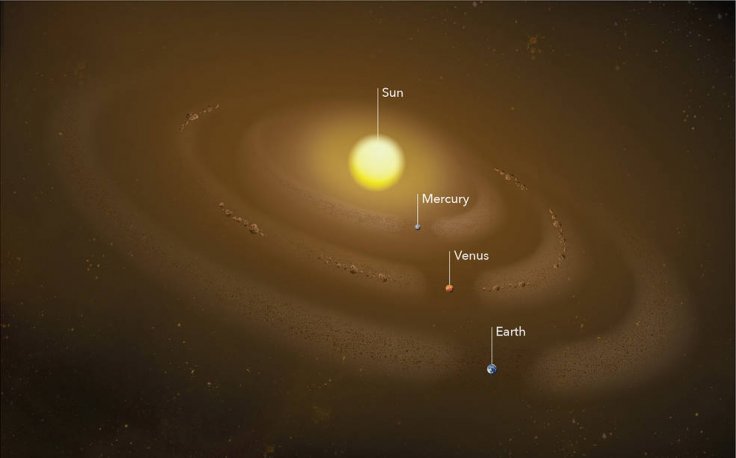
A new study has shown the details about the discovery of a dust ring in Mercury's orbit. The new discovery comes as a surprise, and experts believe that it could reshape the human understanding of the solar system.
Due to powerful gravitational tugs, planets like Earth and Venus have collected co-orbiting dust rings. Until now, scientists believed that Mercury's path will be free of such a feature as the planet is too small and too close to the sun to capture a dust ring.
"People thought that Mercury, unlike Earth or Venus, is too small and too close to the sun to capture a dust ring. They expected that the solar wind and magnetic forces from the sun would blow any excess dust at Mercury's orbit away," said Guillermo Stenborg, a solar scientist at the Naval Research Laboratory, Washington in a recent statement.
Researchers who conducted the study, which was published in The Astrophysical Journal Letters, has broken this belief after spotting the dust ring in Mercury's orbit after analyzing the images captured by one of NASA's twin Solar and Terrestrial Relations Observatory (STEREO) spacecraft, which was launched into the orbit in 2006.
Scientists revealed that the dust ring in Mercury's orbit is approximately 15 million kilometers wide. They have also discovered a gigantic halo in Venus' orbit which spans 26 million kilometres from top to bottom. The dust ring in Venus' orbit is extremely diffuse and is just 10 percent denser than surrounding space.
Scientists believe that a population of undiscovered asteroids zipping around the sun in Venus' path might be the reason behind the formation of these dust rings. Experts also revealed that these asteroid colonies have evaded detection as they usually get lost in sun's blinding glare.
"We model this phenomenon by integrating the orbits of 10,000,000+ dust particles subject to gravitational and non-gravitational forces, considering several different kinds of plausible dust sources. We find that only particles from a hypothetical population of Venus co-orbital asteroids can produce enough signal in a narrow ring to match the observations," wrote the researchers in the study report.









